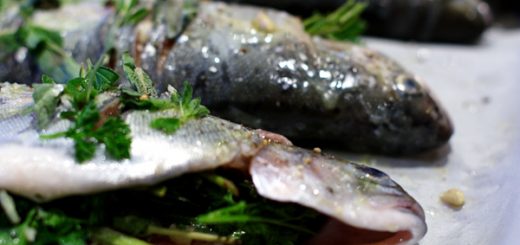Terrarium: How to Make a Terrarium at Home?

You’ve always grown the plants you’ve made room for in your home in pots, haven’t you? Plastic brown or green pots added color to your balconies. You have given freshness to your living space with ceramic painted flower pots. Well, have you ever thought of growing plants that provide oxygen and peace in glass? If you’ve never grown plants in glass before, in ancient times Dr. Ward has thought, tried and proven how easy it is to grow plants in a glass bell jar for you. He called this technique the terrarium.
In this article, where there is plenty of oxygen, we have answered all the questions about the terrarium for you. We did not forget to mention the details of terrarium flower care and terrarium decoration. Are you ready to bring the plants to the glass jar and cheer the eyes with small and elegant touches? Let’s take a look at the terrarium, the popular gift of recent years!
What is a Terrarium?
When we examine its Latin origins, we can see the expressions “terra: earth, aquarium: fanus”. When these two words come together, it can be understood as the earth in the lantern. When we look at it from the botanical field, we can express it as a plant growing activity in a glass lantern. Let’s add that the terrarium is not only an activity but also a botanical art. A terrarium is a miniature garden inside glass lanterns produced in various sizes and shapes.
How did the terrarium become popular? Going back to ancient times, in 1827, Dr. Ward focused his studies on plants. After witnessing the death of plants due to dust and air pollution, he wanted to find a cure. In order to protect the plants, he tried to grow them in glass for a while. As a result of his experiments, he observed that some plants lived in the glass for a long time, and the terrarium entered our lives in this way.
The terrarium looks more aesthetically appealing than the classic pots. It is a very impressive visual material to explain the development of plants to school-age children. For those who want to stay away from the stresses of daily life, it is a kind of hobby that takes the stress and works their hand muscles. So terrarium; It is a kind of plant editing action that is effective and beneficial for everyone.
Two types of terrariums are prepared with open and closed systems. What affects this situation is the living condition of the plant. While plants that love moisture are comfortable in a closed terrarium, those that can live without moisture can be arranged in an open system. The terrarium is prepared not only for plants, but also for some pets. Terrariums with tiny plants for water turtles attract attention.
What are Terrarium Materials?
To prepare a stylish and flamboyant terrarium, you will need to procure the terrarium materials listed:
- Terrarium lantern made of glass that you have chosen according to your taste. The lanterns can be in fruit, animal, plant, pyramid and vehicle figures.
- Various terrarium plants suitable for the space you want to create
- Large and small pebbles in the colors you want
- Specially produced terrarium soil and peat
- Long tongs or tweezers for the decorations you will place on the base of the bell jar
- Spray bottle to water the plant
- activated carbon
- Colorful terrarium sand for coloring
- Decor products that change according to your imagination
- Seashells for those who want to create a sea air
- Terrarium moss to balance humidity
What Are Terrarium Plants?
Since the terrarium is prepared in a glass vase, you should also be selective about the plant. It will not be appropriate to grow very large and bulky plants. For this reason, you should choose a smaller and lighter terrarium flower. The moisture requirement of these plants should also be considered. Since these terrarium plants, which will be in glass, will see the sun directly, the plants should not be very close to the sun. Air rooted plants will take longer to live in a terrarium. Your miniature garden will last longer if you choose the plants on the list when preparing a terrarium:
- Cactus
- succulent
- Fern
- phytonia
- miniature violet
- Selaginella
- pilea
- peperomia
- caladium bicolor
- Cyperus alternifolius, known as the Japanese Umbrella,
- dracaena sanderiana
- Acanthaceae
- Tangle
- Ficus pumila
Terrarium Making: How to Make a Terrarium at Home?
We recommend you to follow these steps to make a terrarium that will fascinate those who see it:
- Choose a Lantern: Wash the terrarium bell you will use well and let it dry.
- Pebbles: Place the pebbles on the base of the bell in any shape and design you wish.
- Prevent Bacteria: Pour activated carbon on the pebble. Thus, you will not allow the formation of any bacteria.
- Feed the Plant: After spreading the charcoal, distribute the special peat in the jar and press it. Peat will feed your plant.
- Edit: Now it’s time to place the plants. Make small holes on the peat and place your plant in these slots.
- Water of Life: Water several times with a spray to give the plants life water.
- Color it: When you want to add decorative products, arrange according to your imagination so that it is not too crowded. If you use too large decors, your plant will not be able to get the necessary oxygen.
- Do not leave it indifferent: Do not neglect to periodically maintain the terrarium you have prepared.
How to Care for Terrarium? How Is It Watered?
Let’s not forget that the terrariums you have prepared are living creatures, and they also need care. So how should terrarium flower care be? Here are the details that need attention:
- Location: Terrariums should not be exposed to direct sun. If exposed to the sun, plants may die. You can protect your tiny garden in a bright environment so that all your efforts are not wasted.
- Sun: In some cases, you may encounter terrarium moss. Algae form when they see too much sun. At such times, take it out of the sun and store it in a cooler place. Don’t forget to clean the algae too.
- Irrigation: If the terrarium is prepared with cactus, it will be sufficient to water it with a spray once a month. For terrarium varieties other than cactus, it is ideal to water once a week.
- Soil Change: The soil of these miniature gardens, which are effortless in soil maintenance, wants to be renewed in very long time periods. Terrarium soil change period can be every 2 years.
- Cleaning: If small rot occurs on the plant, clean the rotten area with the help of fine scissors.
Situations that will damage the terrarium:
- excessive irrigation
- Intense sun exposure
- prolonged suffocation
- Bacterial formation
- algae
- small insects like flies











